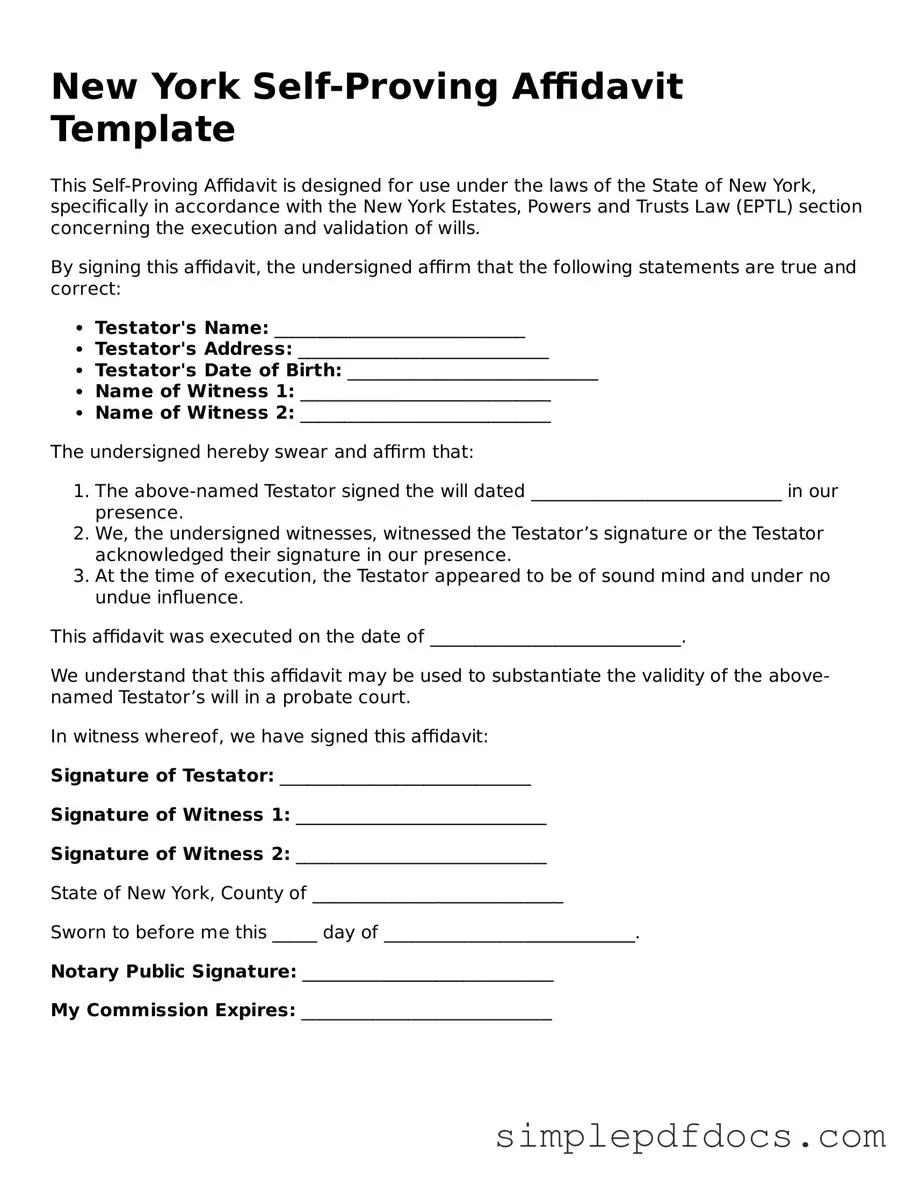The New York Self-Proving Affidavit form serves as an essential tool in the estate planning process, particularly for individuals looking to streamline the probate of their wills. This form allows a testator, the person who has made a will, to affirm the validity of their will in the presence of witnesses. By completing this affidavit, the testator and the witnesses provide a sworn statement that confirms the testator's capacity and intent at the time of signing the will. This can significantly reduce the complications that may arise during probate, as it eliminates the need for witnesses to appear in court to validate the will. Furthermore, the Self-Proving Affidavit must be signed in front of a notary public, adding an additional layer of authenticity. Understanding the requirements and implications of this form is vital for anyone involved in estate planning in New York, as it not only protects the testator's wishes but also eases the burden on the heirs during what can be an emotionally challenging time.
